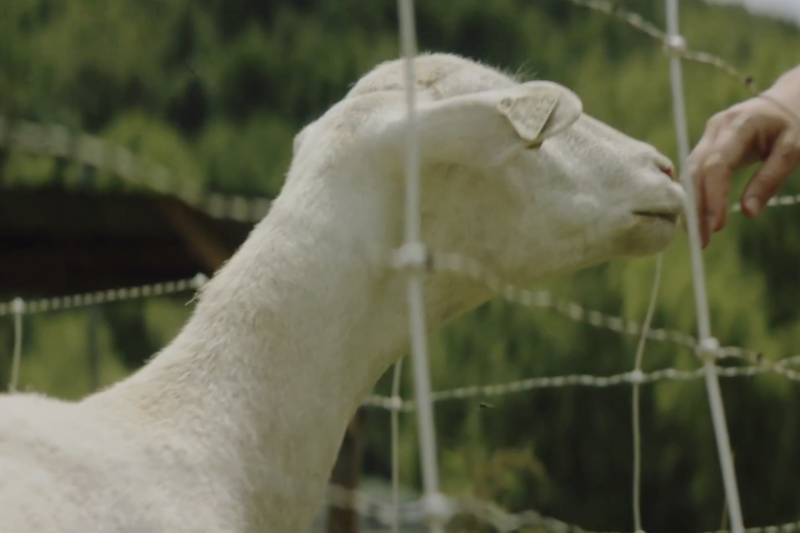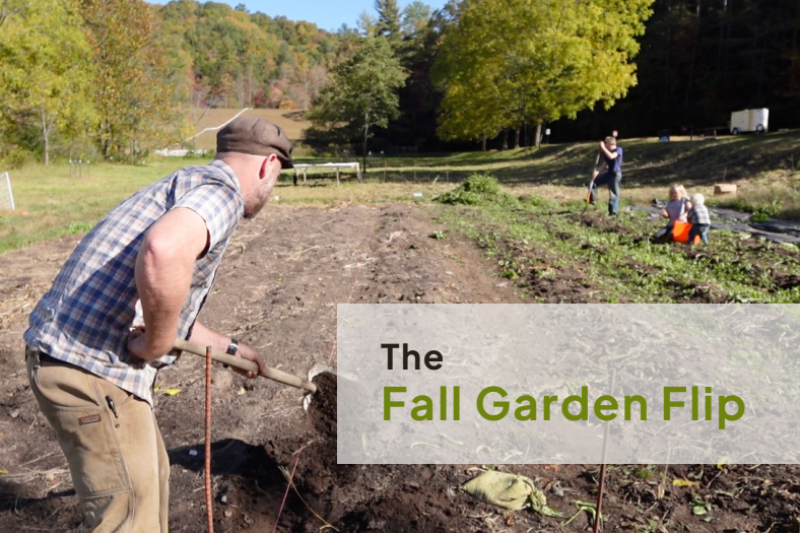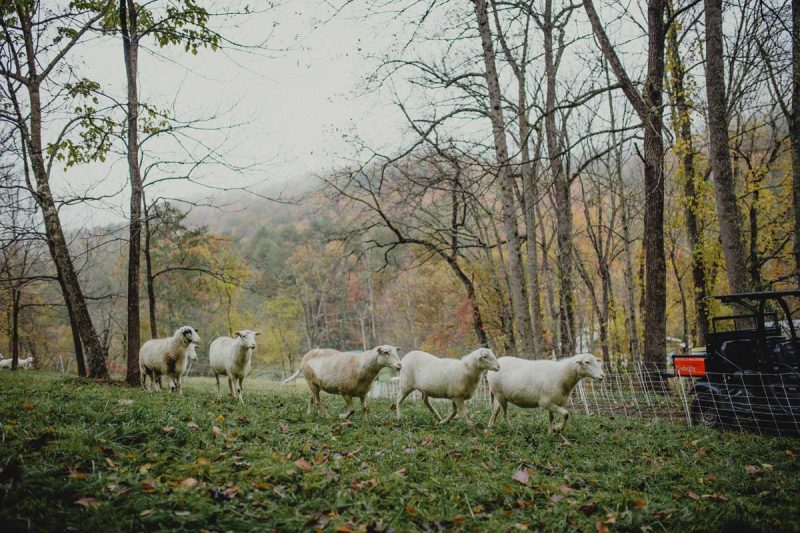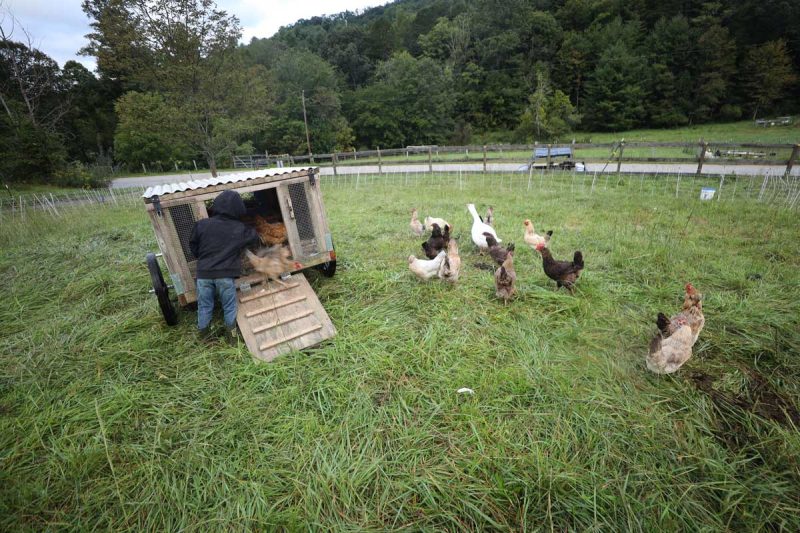Before you begin scything, learning about the effects of using a scythe will be helpful. Keep reading to learn how to use a scythe and properly keep your blade sharp with a whetstone.
What Is a Scythe
A Scythe is a handheld agricultural tool used for harvesting crops and mowing grass. It has a long curved blade with a long handle. A scythe consists of four main pieces, the snath (handle), the blade, the tang (which holds the blade to the snath), and two nibs (the short handles that attach to the snath). There are also two different types of scythes: American and European.
A scythe is an ancient tool, but the time of invention is unknown. The scythe was used by Europeans in the 8th century for harvesting crops to feed their animals in the winter. People used the scythe as the only way of cutting grass and crops until the early 20th century.
Animal-powered machinery and, later, gas-powered machinery eventually replaced the scythe. However, the scythe is now making a comeback due to its simplicity, especially in permaculture life.
Benefits Of A Scythe
The benefits of using a scythe are extensive. Anywhere at any time, you can use these hand mowers.
- No fuel required. The only fuel you need is a good breakfast.
- Scything provides excellent exercise.
- It is the most organic option for harvesting crops or cutting grass. The experts I have talked to say they do not need to water, fertilize, or weed when using their scythe.
- You can still get close to trees and bushes without damaging the tree’s trunk. Using a mechanical weed-wacker can scar the trunks of the trees.
- A scythe will cut through thick brush and over rocky areas and hillsides where machinery has difficulty maneuvering.
- When mowing with a scythe, you can use the clippings for mulch in your garden or flower beds.
- You can allow the grass to grow taller, which fosters mico-organism health in your fields.
Buying A Scythe
Buying a scythe can be a little tricky. There are two different types of scythe, including the American and European. Ordering your scythe from Scythe Supply is a simple way to find a quality scythe.
Scythe Supply allows you to custom order your scythe to your height measurements and chooses either right or left-handed models.
American Scythe
The American scythe has a heavy “S” curved snath made of ash wood. It has two adjustable handles. The blade is straight and made of hard steel. The “S” shape snath helps get the blade against the ground.
The blade is harder to sharpen the blade in the field because you need grinding or other sharpening tools. It is much heavier than its European counterpart. The American scythe is best used as a brush blade but will feel heavy after a short time and is not as friendly to use for long-duration cutting.
European Scythe
The European blade is the most popular style for modern scything. Made of lightweight wood with an almost straight snath and a lightly curved steel blade, the European type of curved blade also allows the blade to be against the ground for quality cuts. It is an excellent option for cutting more significant areas of grass and crops.
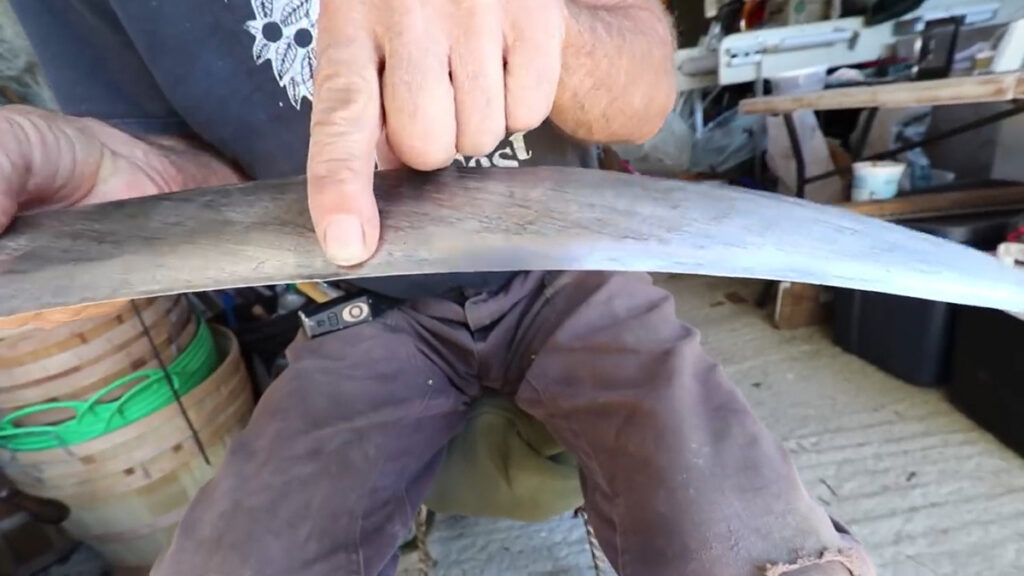
Importance of Caring For A Scythe Blade
Keeping the blade sharp is very important. A dull blade requires more effort, and a dull blade can also become dangerous. Before taking your blade out for a test run, you will need to shape and sharpen it. Here are some tools you will need to sharpen your blade:
- Anvil – An anvil is a large block of metal with a flat surface where the scythe blade is hit by hammers to peen the blade.
- Peening Hammer – This hammer has two sides. One side has a ball-shaped head to shape the blade’s edge, and the other is a flat head for driving the metal on your blade out.
- Peening Jig – A peening jig is a type of hammer used just for a scythe blade. It will safely hammer out the blade’s sharp edge.
- Whetstones – Hand-held wet stones that sharpen your blade when working in the field. These stones need to be constantly wet.
- Bregenzer Stone – A “coarse” wet stone used to hone a scythe blade. It is also known as the fieldstone.
- Rozsutec Stone – This is a “fine” stone for getting a perfect finished edge on your blade.
- Whetstone Holder – A whetstone holder is used to hold and keep your stones wet. Place it on your belt and carry your whetstones wherever you are scything.
Sharpening a scythe blade has two different steps. First, you will have to hammer out the blade edge with a peening jig or anvil with a peening hammer. After the peening process, you will need to hone it with your “coarse” Bregenzer Stone and then finish honing it in with your “fine” Rozsutec Stone.
When mowing, you often want to resharpen your blade with your Bregenzer Stone and Rozsutec Stone. Just run your stone over the blade edge twice to sharpen.
Now that the blade’s cutting edge is sharp, you can begin scything.
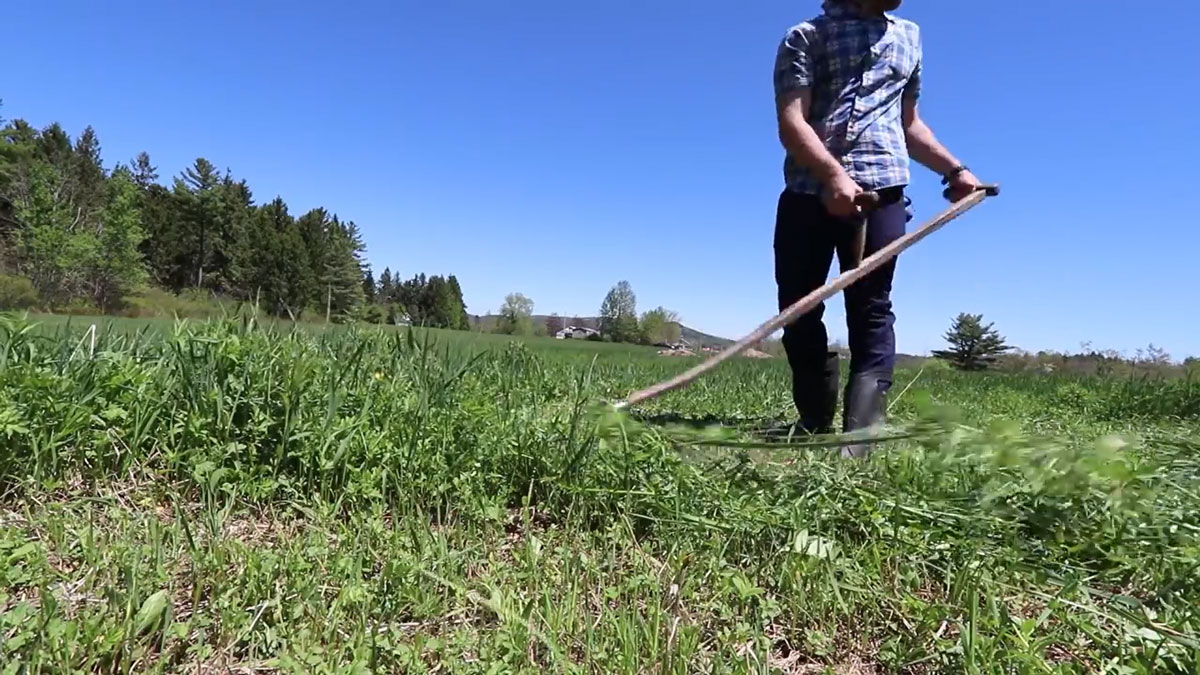
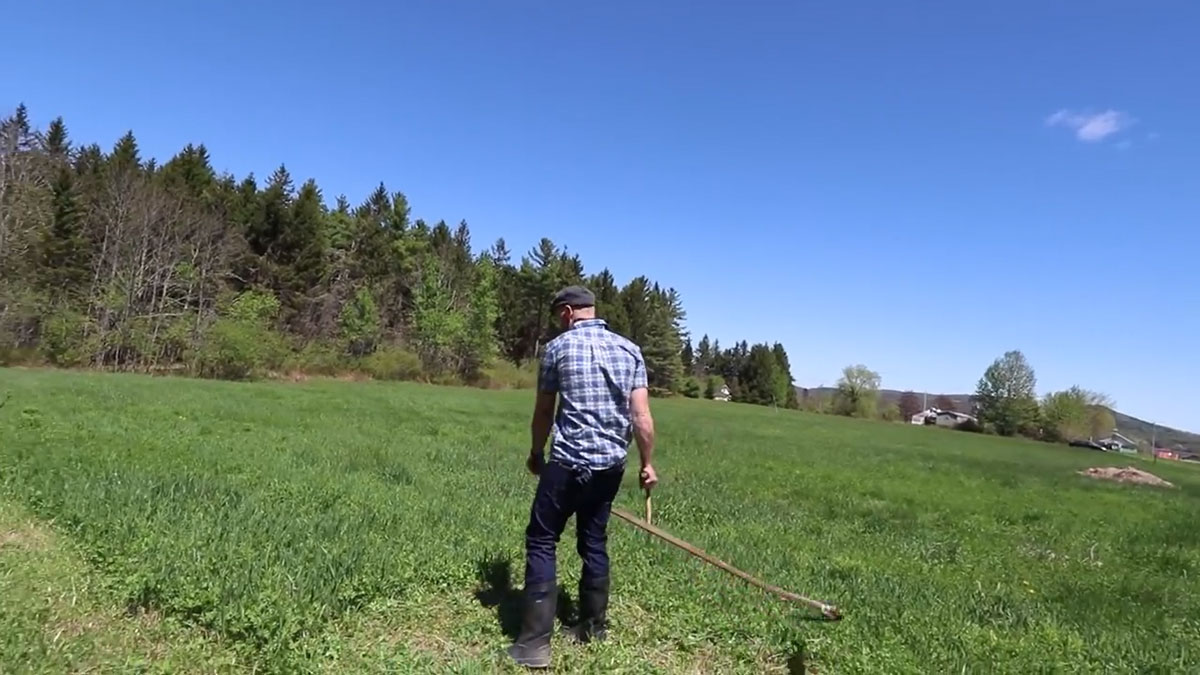
How to Scythe Step-by-Step
Scything is all in the hips with many upper body workouts. It will take some time, endurance, patience and practice to become a scyther, but worth it in the long run.
- Safety first.
- Always keep your blade sharp. More injuries happen with a dull blade than with a sharp one.
- I recommend wearing gloves when sharpening your blade.
- Wear pants to protect your legs.
- Make sure no one is standing nearby while swinging your scythe.
- It is essential how you grip your scythe. If you have a right-hand scythe, you will hold the scythe with your left hand on the top nib (handle) and the right hand on the bottom nib (handle). If you have a left-hand scythe, simply switch the hand positions.
- Stand facing the area you want to cut with your feet shoulder-width apart and firmly planted on the ground.
- Bend your knees a little and keep your back straight.
- Place your scythe blade against the ground. The back of the blade needs to be touching the ground forcing the front of the curved blade upward.
- Now, it is time to swing your hips. Swing your blade close to the ground from your right side in a semi-circle and twist as the blade moves.
- Swing back in the same motion to where you started.
- Take a small step forward and continue with this steady motion, moving the blade back and forth. Pro-Tip: If you are scything brush, you will need to take short strokes.

More Posts You May Enjoy
- Gardening Hacks
- Square Foot Gardening (What, Why & How)
- Chickens in Garden Spaces to Till and Fertilize
- Winter Greenhouse Garden
- Using Chickens for Garden Pest Control & Disease in Orchards
- Raised Garden Bed Plans
- Fast-Growing Vegetables for a Quick Harvest
- Companion Planting with Asparagus and Strawberries










